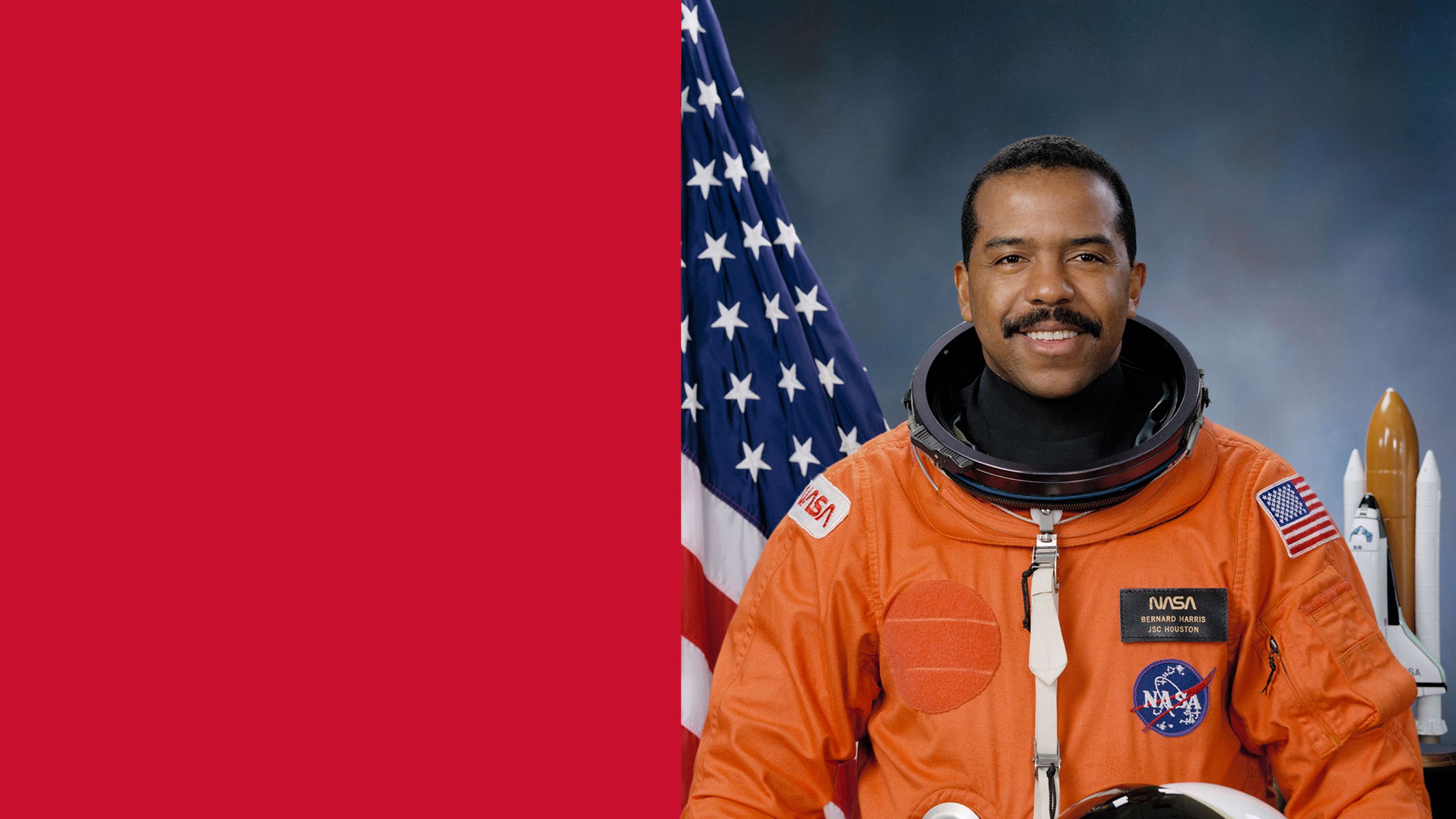Houston, We Have a Star
Dr. Bernard Harris, UH alum and inductee into the U.S. Astronaut Hall of Fame, journeyed from Houston to the stars and back — changing lives along the way.
By DeAnna Janes

Dr. Bernard Harris is a man of firsts. He was the first African American to walk in space and the first physician to conduct a telehealth conference from space. He was aboard the first Russian-American joint shuttle mission flown by the first female pilot, Eileen Collins. It’s an impressive resume, and if you ask Harris, he credits his No. 1: the University of Houston.
Harris was born in Temple, Texas, and raised in Houston. He was a temporary resident of the Navajo Nation — where, under those expansive skies, his dreams of becoming an astronaut began — and returned to Texas to complete high school in San Antonio. But he always thought of Houston as “home.” So when it came time for higher education, there was only one option.
“The University of Houston was my first and only choice,” he says. “I like to describe it as my launching pad.”
“The University of Houston was my first and only choice. I like to describe it as my launching pad.”
As a kid, Harris was drawn to the sciences, particularly medicine and astronomy. So he did both. After earning his bachelor’s degree in biology from UH in 1978, he went to medical school, then completed training at the Mayo Clinic and a fellowship at NASA’s Ames Research Center, researching bone loss as it occurs in space. Shortly after, he joined NASA’s Johnson Space Center as a flight surgeon.
In 1990, Harris’ dream of becoming an astronaut was realized. Chosen for the astronaut training program, he earned his space boots a year later. Two years after that, he was space bound. Over the course of Harris’ cosmo-career, he flew two missions — one on Space Shuttle Columbia and one on Space Shuttle Discovery. It was on that second trip he enjoyed a five-hour spacewalk.
During his time at NASA, Harris researched musculoskeletal physiology and developed medical devices to extend an astronaut’s stay in space. Many of the innovations from his research and experiments are still in use on NASA spacecraft today.
Harris stands on a foot restraint attached to a Remote Manipulator System.
Harris stands on a foot restraint attached to a Remote Manipulator System.
Harris preps for a space walk with fellow astronaut Michael Foale on Space Shuttle Discovery.
Harris preps for a space walk with fellow astronaut Michael Foale on Space Shuttle Discovery.
Harris monitors experiments onboard Space Shuttle Discovery.
Harris monitors experiments onboard Space Shuttle Discovery.
The Space Shuttle Discovery launches.
The Space Shuttle Discovery launches.
Harris with the rest of the Discovery crew.
Harris with the rest of the Discovery crew.
Since retiring from NASA, Harris has turned his attention to fostering education and philanthropy, using his astronomical platform to engage with his community. In addition to running The Harris Foundation, an organization that serves disadvantaged youth, and an investment firm dedicated to telehealth, he launched the first Bernard Harris Science Camp at UH.
A residential program that teaches middle schoolers about STEM, the camp has expanded to more than 50 college campuses across the nation. “These kids are high performers, some that don’t realize how high-performing they are, and we are able to bring them into these college campuses all over the country and make a real difference in their lives,” Harris says.
These days, Harris stays on solid ground, but his achievements remain stellar. He’s a 2025 inductee into the U.S. Astronaut Hall of Fame, and he’s currently enjoying the release of his second book, “Embracing Infinite Possibilities,” designed to help others reach their potential.
Although we’re positive the tome will result in many firsts for those who read it, we can’t help but wonder what Harris’ next first will be.







